When we talk about safety, there’s a difference between being afraid and being aware. As a child, I vividly remember observing and assessing a room, standing back, and taking in my surroundings. That mentality has grown with me as I reached adulthood and later stepped into motherhood. It’s no secret to those in my life that I do not like to feel weak, physically vulnerable, or not in control (enneagram 8, obviously).
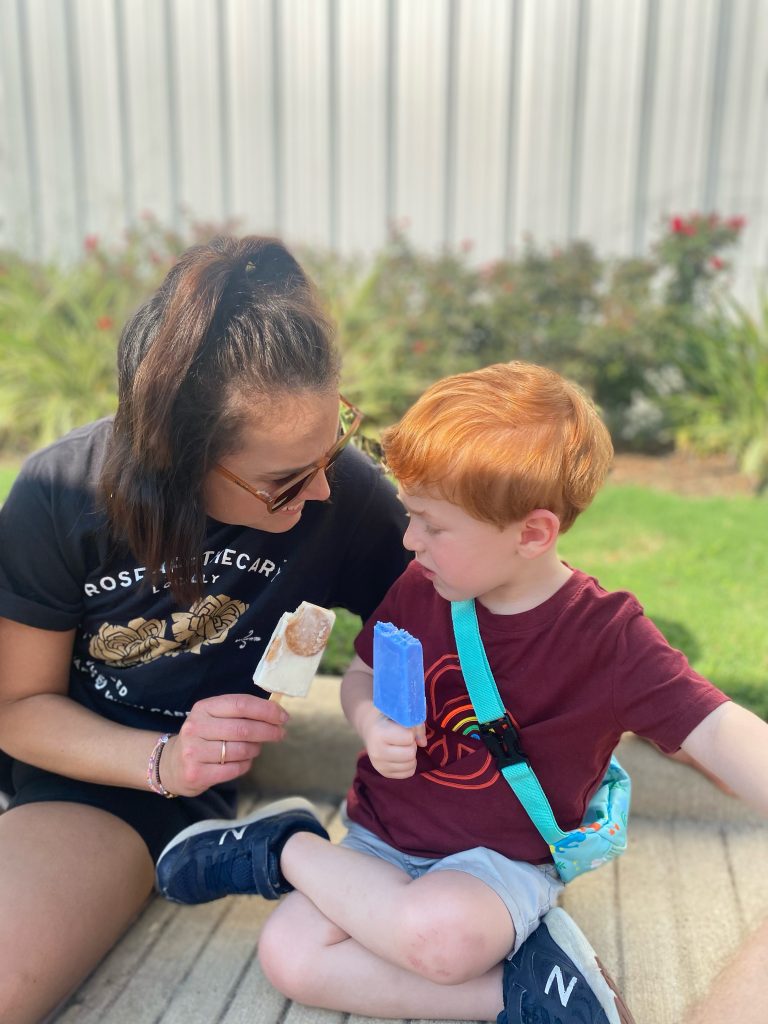 Since entering into motherhood, I have noticed similar traits in our son-taking in his surroundings, being wary of others until he trusts them, and being adventurous but with caution. The conversations around safety and situational awareness come organically between the two of us. In our house, we see these things as open discussions instead of “adult conversations”.
Since entering into motherhood, I have noticed similar traits in our son-taking in his surroundings, being wary of others until he trusts them, and being adventurous but with caution. The conversations around safety and situational awareness come organically between the two of us. In our house, we see these things as open discussions instead of “adult conversations”.
We approach the topics of safety from a “primary prevention” standpoint. Meaning, we discuss scenarios of getting lost, strangers approaching, gun safety, boundaries, and age-appropriate ways of defending ourselves. We discuss these things before they happen, not as a reaction. We discuss the ugly things that are going on in this world and do not shield him from the reality of our society. At least we try our best!
We do not make any of these conversations fear-based, we discuss with him the why behind our conversations, and typically make it into some form of game. He continues to ask to play this “game” when we are driving or during homeschool lessons, which tells me he understands and is learning. Winning.
Conversations Starters…
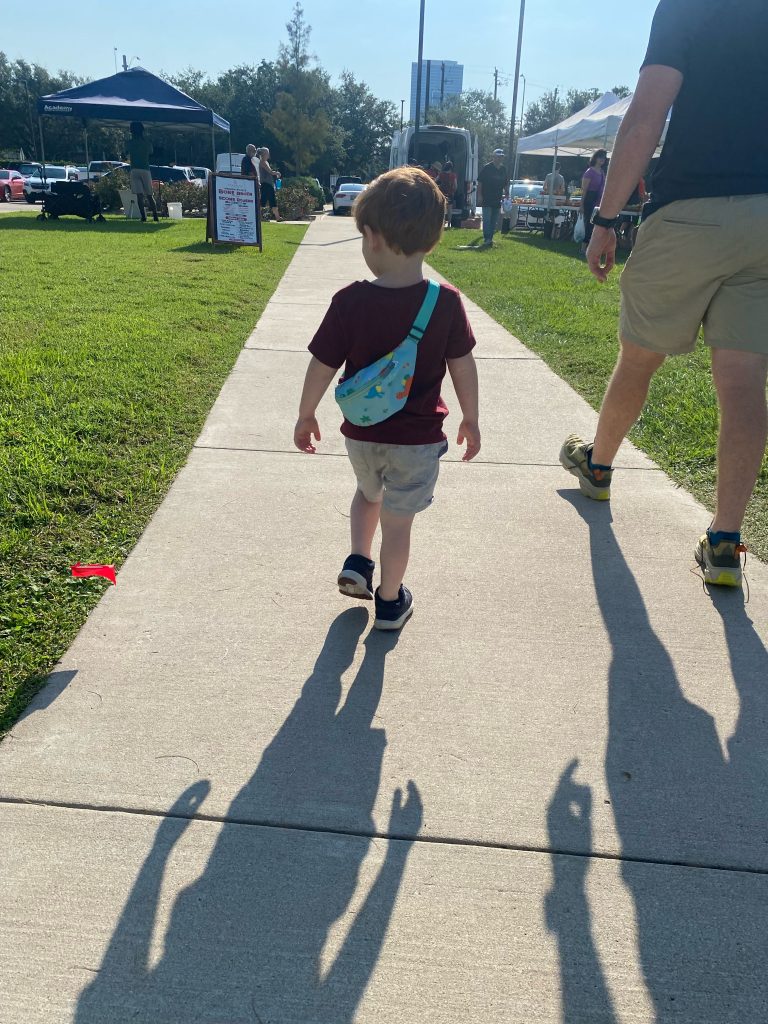 “Tell me what you would do if we were in Target and you couldn’t find Mom?”
“Tell me what you would do if we were in Target and you couldn’t find Mom?”
“What is the first thing you would do if you got lost at the park? And the second thing?”
“What could you say to someone {child or adult} that makes you feel uncomfortable?”
“Tell me what you would do if you found a gun at your friend’s house”
“Who would you look for first if you needed help and couldn’t find Mom or Dad?”
These questions make for some amazing conversations and teaching moments. Another really useful tip is to find books that spark these conversations. Here’s one of our most recent library finds.
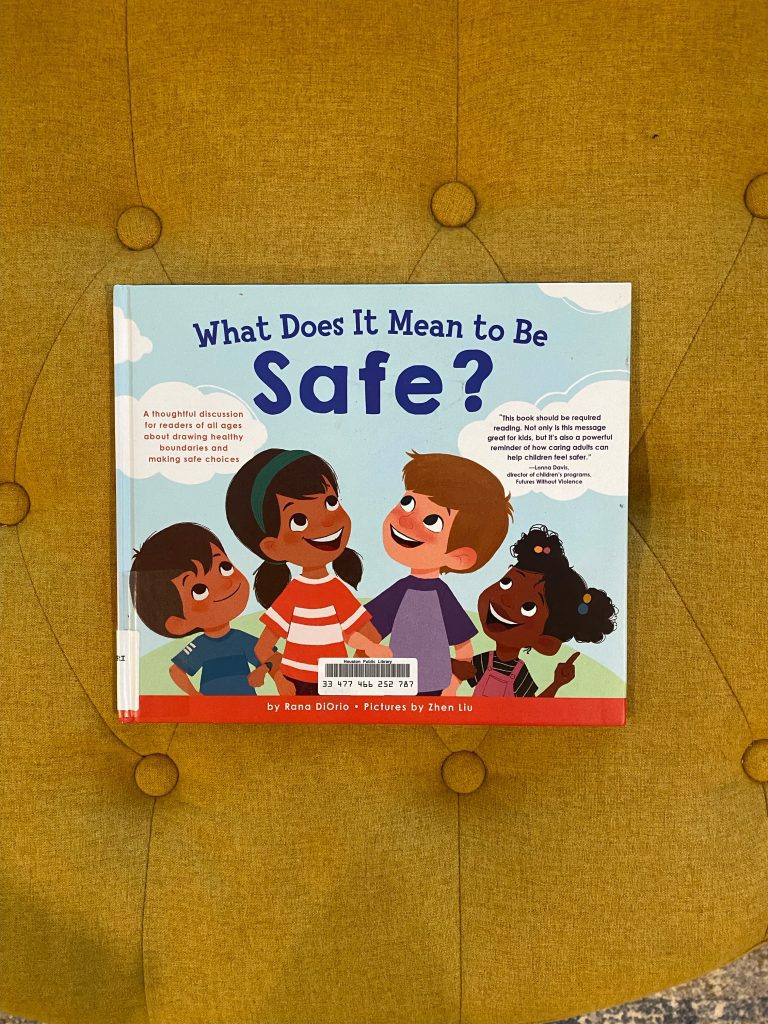 More than Conversations
More than Conversations
One of the more tangible things we have implemented in our family is my son’s use of what we call his “adventure bag”. Basically, this is a fanny pack style bag that we let him pick out {obviously it’s covered in dinosaurs}. Having him involved in the basic bag decision made him all the more excited to learn about the why behind the bag and what we collectively chose to fill it with. Remember, this gets to be fun if we let it!
Contents might change depending on where we are heading, and sometimes the bag changes into something with a little more space {like a backpack}, but there are a few things the bag is never without.
Identification card: this does not have to be fancy, make it legible and easily accessible, putting what you feel is important information. For us, it has the first name of our son and both parents’ phone numbers (an index card inside of a luggage tag). He knows the type of person he is looking for and what to say and do with his ID card (our first option is to find someone who appears to be a parent).
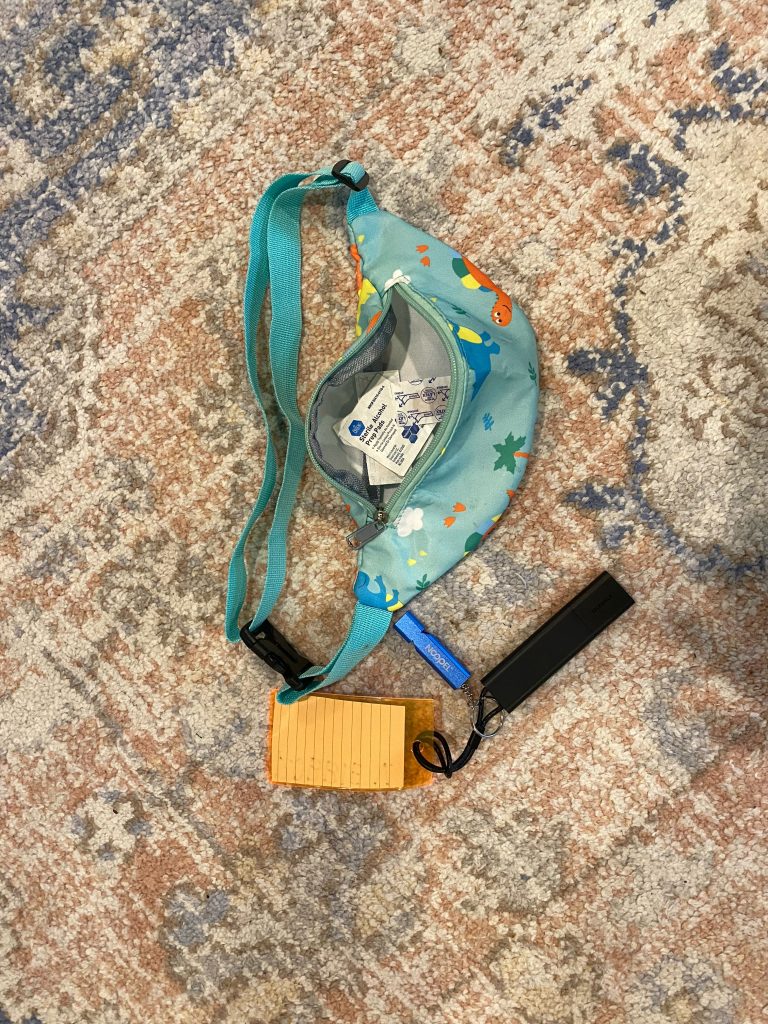 We have put this into practice by pretending to need help and running through scenarios at parks, the zoo, etc. By knowing that I am safely nearby, he has successfully identified a person to go to and say that he is lost and practice giving his ID card.
We have put this into practice by pretending to need help and running through scenarios at parks, the zoo, etc. By knowing that I am safely nearby, he has successfully identified a person to go to and say that he is lost and practice giving his ID card.
Whistle: this does not mean a cheap dollar store whistle-though that is absolutely better than nothing. We have an outdoor whistle and he practices using this and knows the appropriate times and places where he would have to utilize it.
First Aid: his skills as far as first aid go are still very basic; however, he is equipped with antibacterial ointment and a few bandaids to attend to basic needs. It also provides him with a sense of pride knowing that he could take care of a scraped knee if absolutely necessary.
GPS: while this might seem extreme (and admittedly took convincing my husband), it’s a measure I am currently willing to take. The GPS device is small but effective. It is a last-ditch effort in securing my mama piece of mind.
Snacks: You never know when you might need a snack on an adventure! And, also because I want him to start learning the basic needs we have if situations were to ever go awry.
Toys: this is a fun addition he gets to pick out and take along his adventures–usually a race car or something similar size.
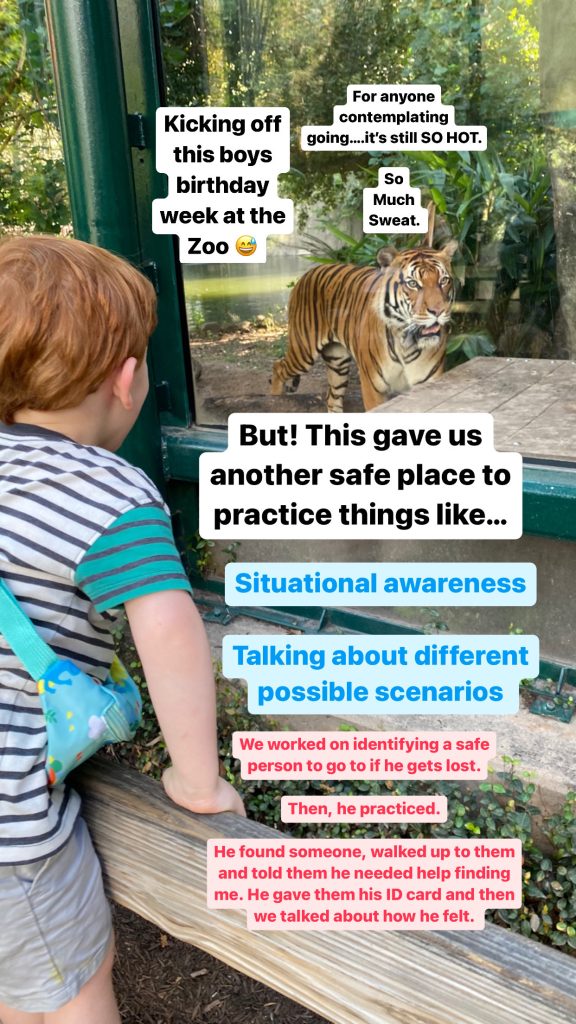 This adventure bag continues to change as he gets older, and it is something I am constantly assessing the need for more/less, depending on our environment. For example, going to the grocery store vs going camping–very different adventures.
This adventure bag continues to change as he gets older, and it is something I am constantly assessing the need for more/less, depending on our environment. For example, going to the grocery store vs going camping–very different adventures.
The ability to have these conversations around safety and situational awareness is a gift in this parenting journey. I only hope to be able to continue to honestly and appropriately expand on the topic as time goes on.



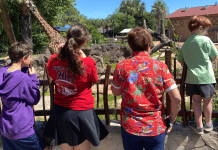
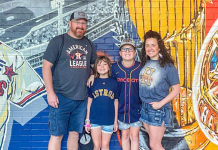
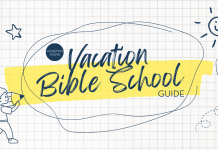


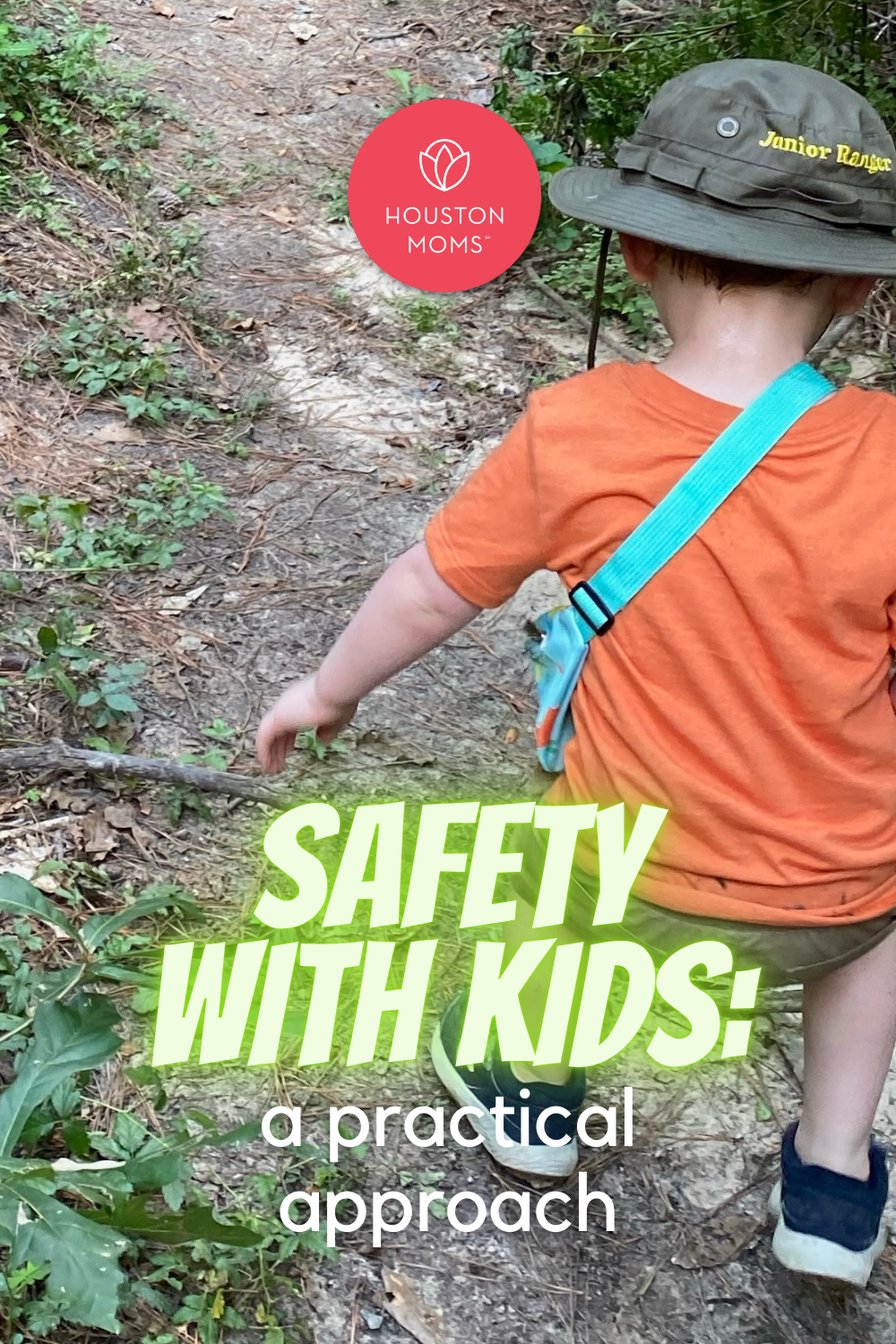





Great one !!!!!
Love it, Becca!